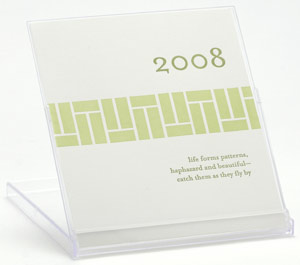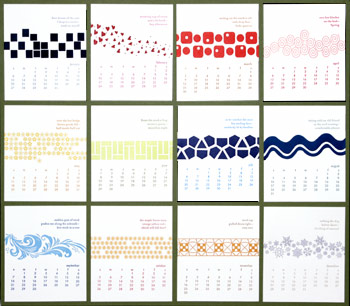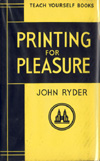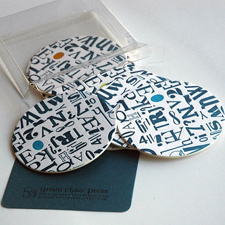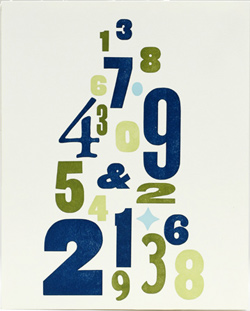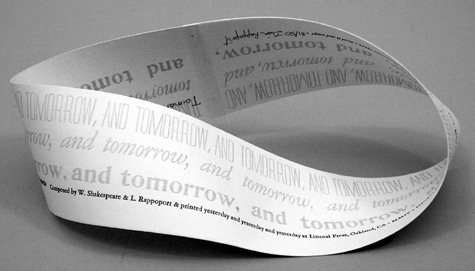
I’m printing my 2008 calendar design on my hand-feed, manually operated (using a foot treadle) letterpress printer. The calendar has 14 pages, 2 colors each. This ends up to be a lot of feeding and a tremendous amount of treadling. It’s not a particularly mindless task, as I have to pay attention so that my hands don’t get caught as the platen opens and closes, that the paper is straight, and most importantly that the ink is consistent across pages. Once I get a rhythm going, though, it turns out to be a pleasant way to spend an afternoon, especially with a bit of music on the radio or through my ipod.
 While printing I’ve been thinking about calendars I’ve particularly liked. The one pictured in this post is by Lisa Rappoport of Littoral Press from 2005. It’s really more of a mediation on time, I guess, and it perfectly matches that repetitious feel that I have spending my afternoons treadling. (Kate Godfrey took the picture.)
While printing I’ve been thinking about calendars I’ve particularly liked. The one pictured in this post is by Lisa Rappoport of Littoral Press from 2005. It’s really more of a mediation on time, I guess, and it perfectly matches that repetitious feel that I have spending my afternoons treadling. (Kate Godfrey took the picture.)
To-morrow, and to-morrow, and to-morrow,
Creeps in this petty pace from day to day,
To the last syllable of recorded time;
And all our yesterdays have lighted fools
The way to dusty death. Out, out, brief candle!
Life’s but a walking shadow; a poor player,
That struts and frets his hour upon the stage,
And then is heard no more: it is a tale
Told by an idiot, full of sound and fury,
Signifying nothing.
 —Macbeth (V, v, 19)
—Macbeth (V, v, 19)
 In addition to the Bookmaking With Kids and Susan’s Kupinski’s Making Books with Children, there’s a new web resource for making books with kids. Arts, Books and Creativity is a year-long arts curriculum developed by the National Museum of Women in the Arts. The curriculum section of the site has PDF worksheets with book structure instructions and there’s also an interactive section with videos about making books and tying content to structure.
In addition to the Bookmaking With Kids and Susan’s Kupinski’s Making Books with Children, there’s a new web resource for making books with kids. Arts, Books and Creativity is a year-long arts curriculum developed by the National Museum of Women in the Arts. The curriculum section of the site has PDF worksheets with book structure instructions and there’s also an interactive section with videos about making books and tying content to structure.
